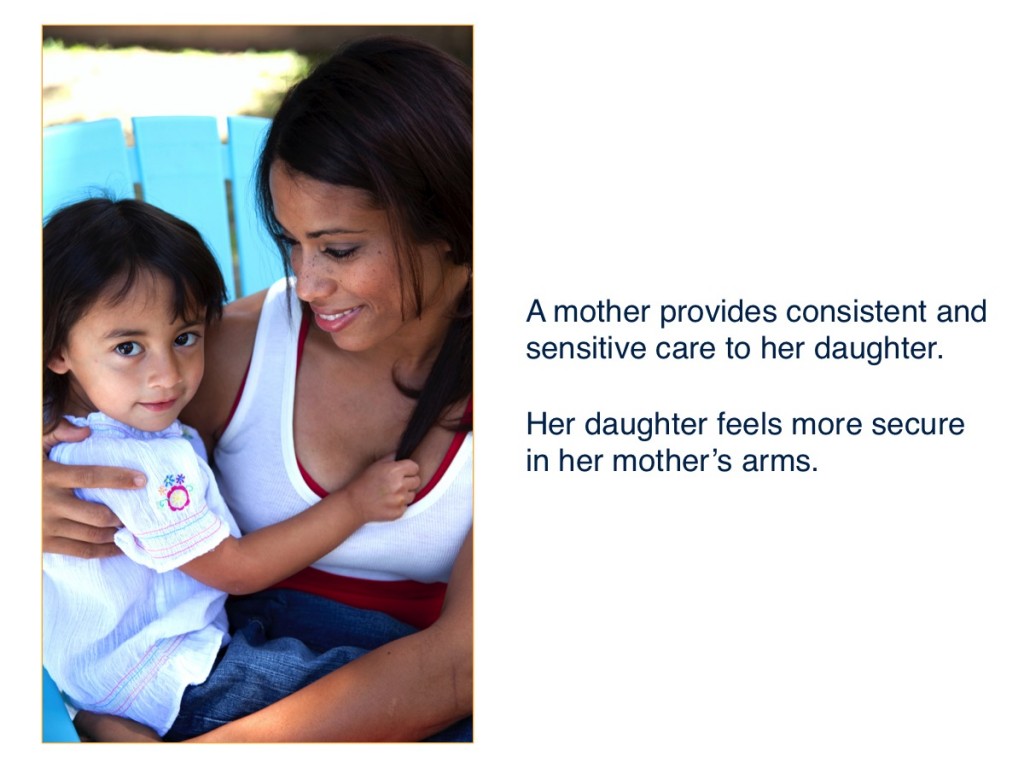
In the module “The Development of Attachment,” we discussed how a child’s traits and family factors influence attachment. But caregivers also contribute to the attachment relationship. There are two main caregiving factors that determine children’s quality of attachment. The first is how much consistent care children receive early in life. The second is how sensitive the caregiver is to the child’s needs.
What does consistent care look like for a child? It’s meeting a child’s physical, emotional, and psychological needs on a regular basis. A caregiver must first recognize an infant’s signals. Then she has to determine what those signals mean and reliably respond to them. It’s not always easy to figure out what an infant needs. Sometimes a caregiver might misinterpret or miss an infant’s cue. The key is for the caregiver to make adjustments to increase consistent care during future interactions. Consistency is important not only in times of distress but also during play. This helps the child feel comfort and security. When a caregiver is inconsistent, it’s hard for the child to know whether or how the caregiver will respond. Infants who receive unpredictable care may show less secure attachment behavior. Inconsistency of care can arise for many reasons. Infants may move between attachment figures during their first year of life. There may be challenges at home that take a parent’s attention away from the child. In more extreme cases, a child may experience maltreatment or neglect.
Keep in mind that all caregivers are inconsistent and unresponsive sometimes. Yet most infants establish a loving bond with a parent or main caregiver. Providing quality care to infants is important for their attachment. Infants raised by more sensitive parents are more likely to develop secure attachment.
-
- Interactional synchrony
- caregivers and infants respond to each other in a reciprocal and rhythmic manner